#creole okra
Explore tagged Tumblr posts
Photo

Easy Creole Okra and Shrimp Shrimp is simmered in a spicy tomato sauce with okra and andouille sausage. 1 package frozen cut okra thawed, 2 pounds peeled and deveined medium shrimp, 2 tablespoons Cajun seasoning or to taste, 2 tablespoons olive oil, 2 teaspoons salt, 2 cans diced tomatoes, 3 cooked andouille sausage cut into quarters, 1 green bell pepper chopped, 1 small onion chopped
1 note
·
View note
Photo

Easy Creole Okra and Shrimp Recipe Okra, andouille sausage, and shrimp are simmered in a hot tomato sauce.
0 notes
Photo

Creole Okra A delicious and simple vegetarian side dish. Taste endures after being stored. This is a favorite in our family all year round because frozen okra is used.
0 notes
Text

Cajun Chicken and Sausage Gumbo
#cajun food#cajun seasoning#cajunspices#cajun cooking#cajun#chicken#chicken rice#chicken recipe#sausage#gumbo#louisiana#new orleans#creole#soul food#dining and entertaining#fine dining#dining room#dining#entree#main course#toya's tales#style#toyastales#toyas tales#summer#black culture#okra#dinner#september#lunchtime
255 notes
·
View notes
Text

Creole Seafood Gumbo with Blue Crabs and Shrimp
This incredible Louisiana style creole seafood gumbo is the best shrimp and crab gumbo going! Gumbo, a staple dish in New Orleans, is a rich and flavorful soup like concoction known for its diverse combination of ingredients. It draws influences from African, French, Spanish, and Native American cuisines, making it a true representation of the multicultural melting pot that is New Orleans.
For this recipe, please go to:
For hundreds more delicious recipes and mouthwatering food images, please go to:
#crabs#shrimp#crabmeat#plum tomatoes#onioins#bay leaves#salt and pepper#cayenne pepper#Cajun seasoning#Creole seasoning#chicken broth#Okra#main course#side dish#lunch#brunch#dinner#seafood#Louisianna#low country#bayou#southern#comfort food
2 notes
·
View notes
Photo

Recipe for Hearty Creole Okra and Tomatoes A delicious andouille sausage, corn, tomato, onion, celery, and okra dish from the South. 2 onions chopped, 2 cans whole tomatoes broken up, 2 pounds fresh okra cut into 1/2 inch slices, 2 tablespoons olive oil, 2 tablespoons butter, 1/2 teaspoon Creole seasoning or to taste, sea salt and ground black pepper to taste, 4 stalks celery chopped, 1/2 pound andouille sausage diced, 4 ears fresh corn shucked and kernels scraped from cob
0 notes
Text
The Gullah people are descendants of African slaves who live primarily on the Sea Islands and coastal regions of South Carolina, Georgia, and parts of Florida and North Carolina. Brought to the region from West Africa in the 18th century for their agricultural expertise, especially in rice cultivation, they developed a unique culture influenced by their African heritage and isolation from the mainland due to the region's geography.
Their language, also called Gullah, is a Creole blend of English and various West African languages. It serves as both a functional means of communication and a cultural link to their African roots. Gullah culture is renowned for its vibrant traditions, including storytelling, spiritual practices, cuisine, and folk arts like basket weaving, which have been preserved over generations.
The Gullah culinary tradition—characterized by ingredients like rice, seafood, and okra—is a foundation of Southern soul food. Additionally, Gullah music, spirituals, and dance have significantly influenced broader African American culture.
Today, the Gullah/Geechee Cultural Heritage Corridor, established by Congress, protects and promotes Gullah heritage. Despite pressures from land development, the Gullah people continue to celebrate and preserve their history, representing a profound connection between African and American cultures.
40 notes
·
View notes
Text
from the comments on a youtube video:
caseyvidrine3189 4 years ago Im cajun to the bone. NO worstershire sauce, no adding hot sauce and you dont mix seafood and sausage ever! Oh and no wine and I prefer to not use celery.
IslenoGutierrez 4 years ago Casey Vidrine You are way off. I'm born and raised in south Louisiana and I put a tablespoon of Worcestershire and my cousin adds a few shakes of hot sauce to his and we mix seafood with sausage every time we make a gumbo. It all depends on your area and your family. Like my grandmother said, there's as many ways to make gumbo as there are people that cook it. And she was right. Being Cajun has nothing to do with making gumbo. Gumbo existed in Louisiana before the arrival of the Acadians. (ancestors of the Cajuns). I'm a white Creole and according to the history of your surname, so are you... the name Vidrine is not Acadian, it's French creole (Louisiana-born whites of French descent) that came straight from France before the arrival of the Acadians (ancestors of the Cajuns), it was originally spelled Védrines. Take a look at your family history (you're welcome) https://www.scribd.com/doc/294701222/La-Famille-de-Vedrines-The-Vidrine-Family @XxxclusiveReviews 3 years ago Gumbo is a African dish made by southern blacks… These folks think dream of making it the correct way.. any kind of oil.. please.. hot sauce 🤔
@mandykelley4883 1 year ago @XxxclusiveReviews I don't need to "steal" your culture. I'm Native American with Cajun roots and my son is half Nigerian. Trust me I'm cultured enough. What you are trying to do is called appropriation. What we eat and know today as gumbo was made right here in America by ethnically diverse communities. What was made in West Africa was a fish stew with okra in it. And west Africans we're not the only ones throwing native resources into boiling water to eat. Please try to educate yourself on on your own cultural foods and history before accusing people of stealing your culture.
the girls are fightingggg....
38 notes
·
View notes
Text
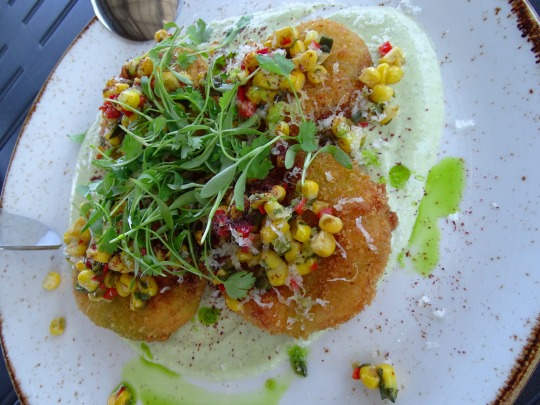
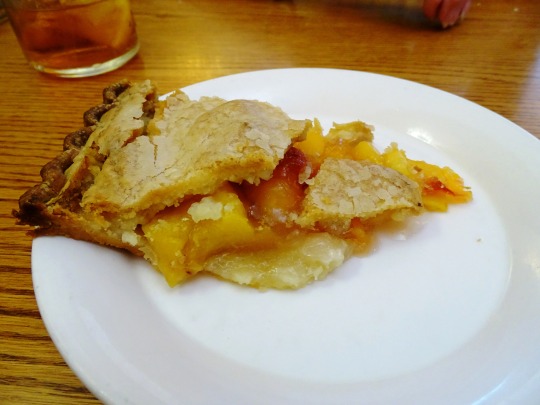

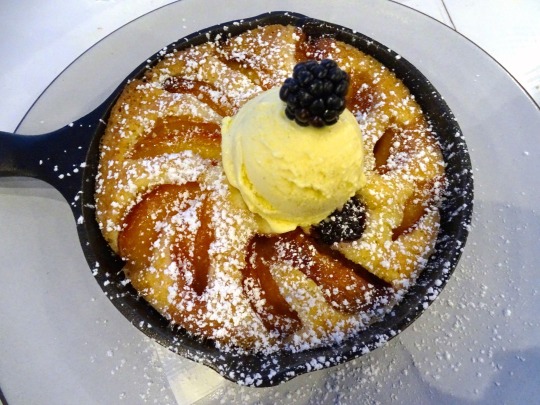
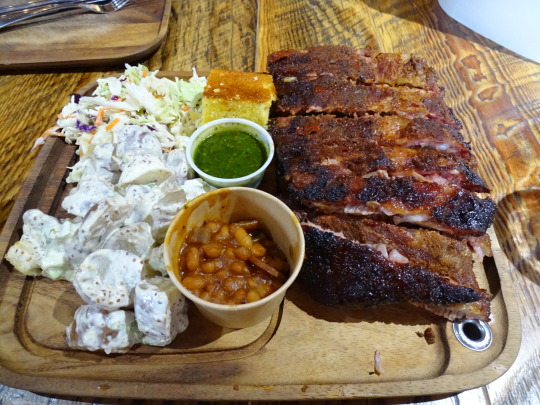
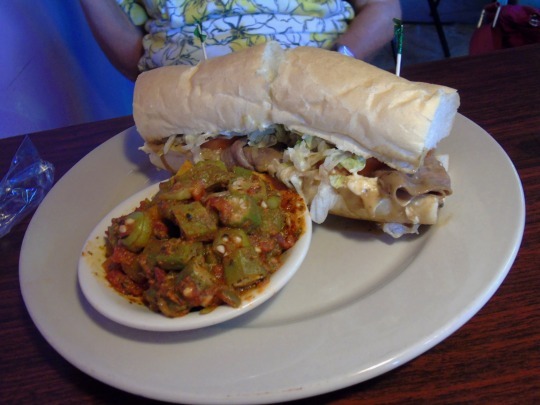

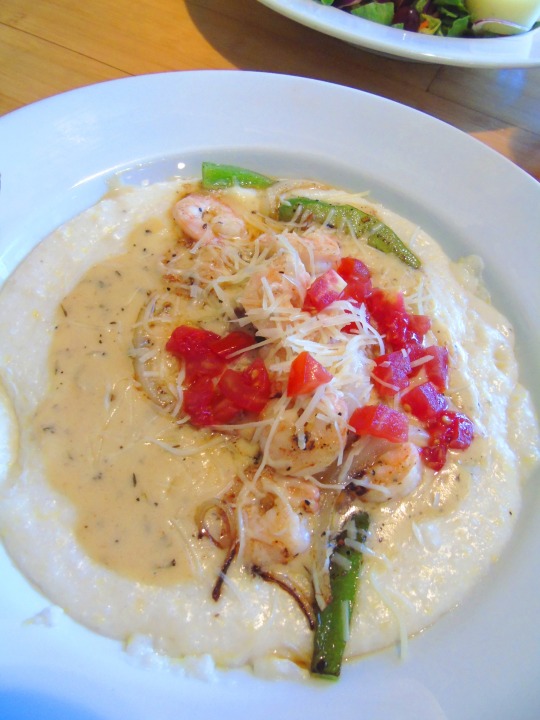



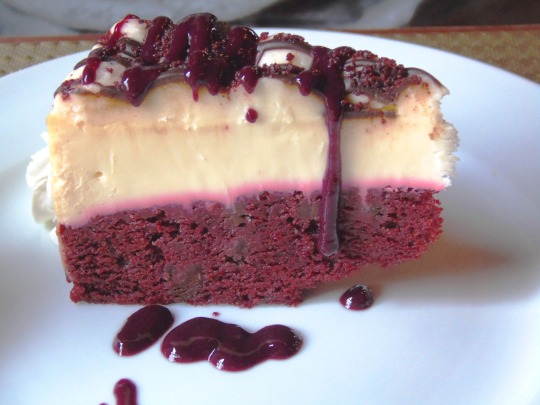

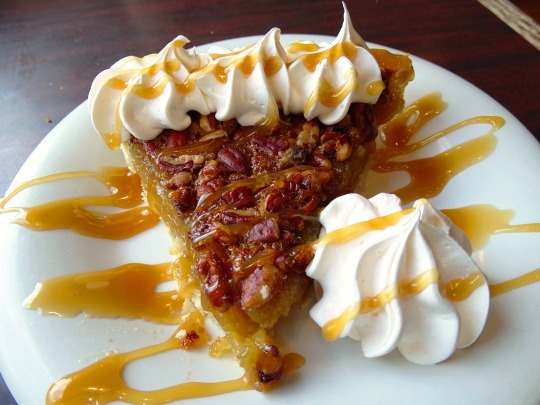
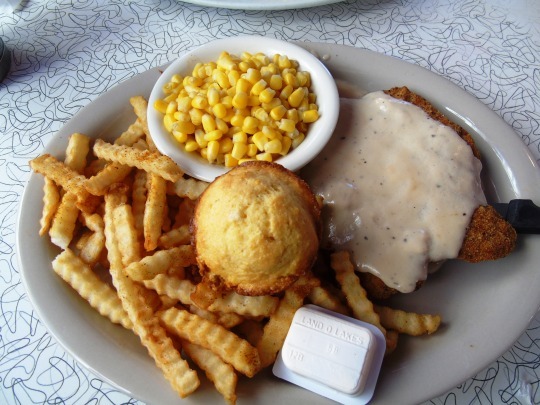
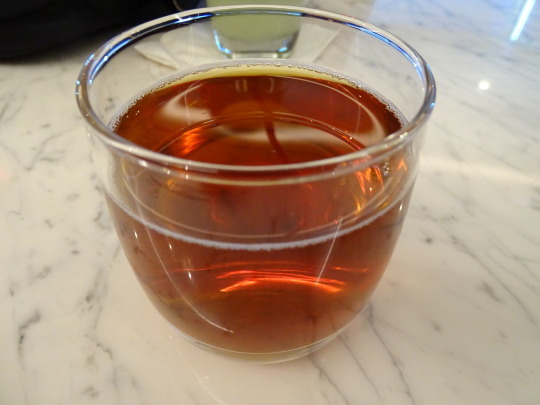
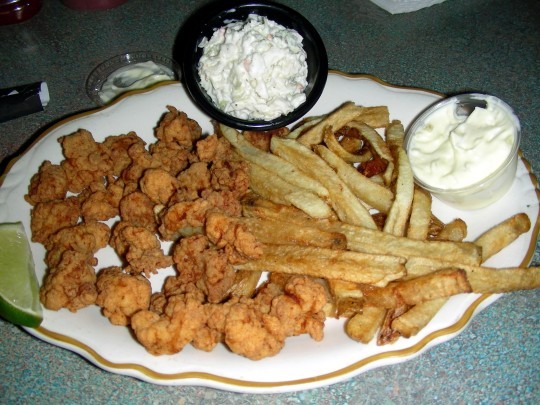
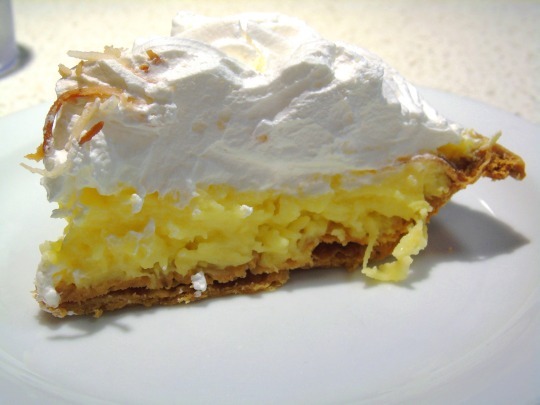
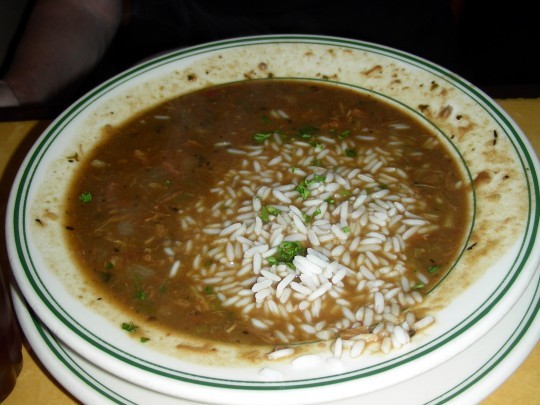
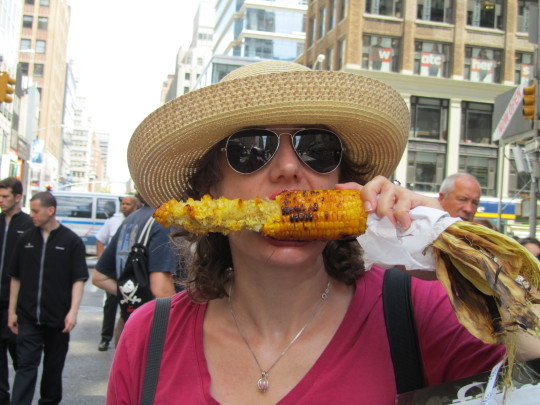
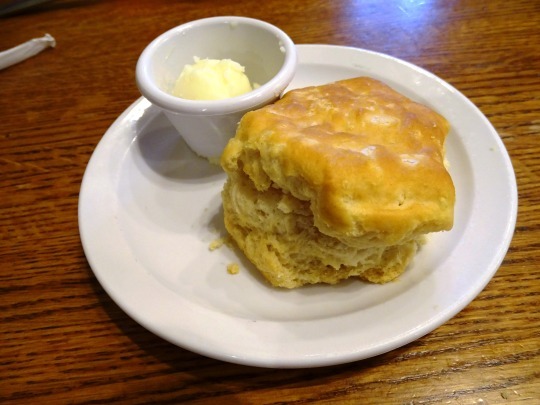
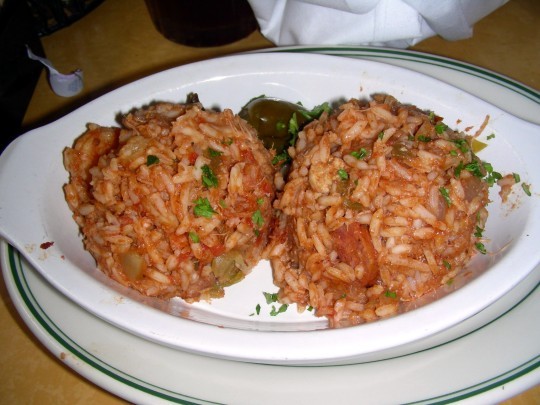

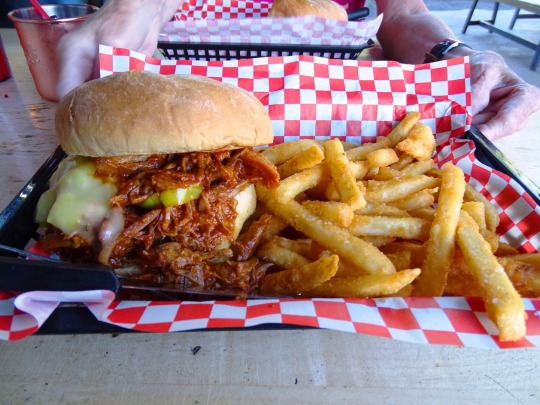

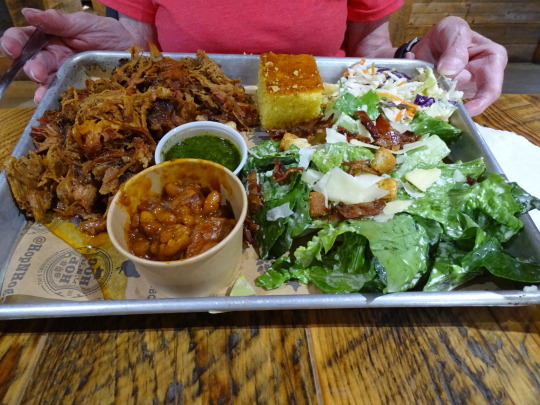

Southern Food Heritage Day
Every year, Southern Food Heritage Day is celebrated on October 11. The Southern Food & Beverage Museum celebrates the culturally rich and delicious food of the Southern States in America. The cuisine deserves to be recognized and celebrated officially because it is a testament to American history and legacy. Southern food also represents the essence of America — the coming together of a variety of people from all over the world, each bringing with themselves their own ingredients and recipes to create a unique cuisine. Iced tea, pickled shrimps, and fried chicken are some of the most loved Southern foods throughout history. Along with the cuisine, the day also celebrates the racial and ethnic diversity in America.
History of Southern Food Heritage Day
Southern Food Heritage Day celebrates the best that Southern food and beverages have to offer. The South’s cuisine in America can be found in the historical regional culinary form of states generally south of the Mason-Dixon line dividing Pennsylvania and Delaware from Maryland, along the Ohio River, and extending west to southern Missouri, Oklahoma, and Texas. The most notable influences on Southern cuisine are African, English, Scottish, Irish, German, French and Native American.
The food of the American South displays a unique blend of cultures and culinary traditions. The Native Americans, Spanish, French, and British have contributed to the development of Southern food, with recipes and dishes from their own cultures. Food items such as squash, tomatoes, corn, as well as certain cooking practices such as deep pit barbecuing, were introduced by south-eastern Native American tribes such as the Caddo, Choctaw, and Seminole. Many foods derived from sugar, flour, milk, and eggs have European roots. Black-eyed peas, okra, rice, eggplant, sesame seed, sorghum, and melons, along with spices, are of African origin.
Southern food can be further divided into categories: ‘Soul food’ is heavily influenced by African cooking traditions that are full of greens and vegetables, rice, and nuts such as peanuts. Okra and collard greens are also considered Soul Food, along with thick stews. ‘Creole food’ has a French flair, while ‘Cajun cuisine’ reflects the culinary traditions of immigrants from Canada. ‘Lowcountry’ cuisine features a lot of seafood and rice, while the food of the Appalachians is mostly preserved meats and vegetables. Southern food is partial to corn, thanks to the Native American influence.
Southern Food Heritage Day timeline
1860
Southern Diet Expands
Following the emancipation from slavery, the Southern diet becomes versatile.
1916
The Great Migration
African Americans travel from rural communities in the South to large cities in the North and West — they carry their cuisine with them.
1940s
Southern Foods in Restaurants
Southern foods start appearing on restaurant menus and appeal to a diverse clientele.
1964
Soul Food
This term, describing everyday Southern food, first appears in print.
Southern Food Heritage Day FAQs
What is the difference between Southern food and soul food?
The difference between soul food and Southern food is rooted more in class than race, and what families were able to afford to put on the table.
What is a typical Southern meal?
A traditional Southern meal is pan-fried chicken, field peas, greens, mashed potatoes, cornbread or corn pone, sweet tea, and a pie for dessert.
Why is Southern food so unhealthy?
The Southern diet is commonly high in processed meats, which are high in salt and in nitrates, which are in turn linked to heart risk. The high sugar content of the diet may also lead to negative effects, like insulin resistance and inflammation.
How To Celebrate Southern Food Heritage Day
Organize a cook-off: Gather all your friends and organize a cook-off on Southern Food Heritage Day. Revive old recipes or add a twist to create something new.
Go out for a meal: Enjoy the best of Southern foods at your favorite Southern foods restaurant. Don’t forget to enjoy the classics like fried chicken, hush pies, and pies.
Set up a barbecue: Barbecues are an integral part of the Southern food heritage. It is also one of the most popular styles of cooking. Barbecue your favorite meats and vegetables, and serve them with sauces and seasonings.
5 Facts About Southern Foods That Will Blow Your Mind
Redeye gravy has a unique recipe: Redeye gravy is made with pan drippings and leftover coffee.
It is more calorie-dense: Southern fried chicken breast typically has more than 400 calories in an ounce.
Peanut butter is an essential: Half the annual crop of peanuts is used to make peanut butter.
Collard green has been around forever: It’s been a part of our diet for more than 2,000 years.
Black-eyed peas are also good luck charms: It is believed that black-eyed peas bring good luck on New Year’s Day.
Why We Love Southern Food Heritage Day
A day to indulge: You cannot celebrate Southern Food Heritage Day without enjoying a hearty meal of your favorite foods. This is truly a day of indulgence!
Try something new: The best thing about Southern food is that it has something for everyone. Use this day to try a new food item or the cuisine of Southern heritage. Who knows, you might just discover your next favorite dish!
It is historically significant: Southern foods have a rich cultural and historical significance. Learn more about the origins of your favorite foods on Southern Food Heritage Day.
Source
#Peach Blackberry Cobbler#Peach Pie#Fried Chicken Sandwich#ice tea#Fried Chicken#collard green#Okra stew#Southern Food Heritage Day#USA#soul food#original photography#travel#vacation#restaurant#SouthernFoodHeritageDay#Coconut Cake#Shrimp and Grits#Hot Sausage Po'Boy#candied yam#Florida Gator Tail#Gumbo#Jambalaya#Pecan Pie#Chicken Fried#corn cob#Baby Back Ribs#11 October
7 notes
·
View notes
Text
Authentic Louisiana Gumbo
Cooking time: 90 minutes
Growing up in South Louisiana I always heard about my family's older generations living in New Orleans. My mom moved to Baton Rouge in her 20s, but we're New Orleanian through and through– we have our roots traced back to Acadia, Gaudet is our family name. In highschool my mom taught me how she and her mom and her nana made their gumbo, but a few conversations will tell you that there's more "right ways" to make Gumbo than there are creole people. Here's my right way.
GATHER YOUR INGREDIENTS: I always heard that your mom was my mom's midwife when I was born, but we didn't know each other really until highschool because you lived in Lafayette. I changed my name to Johanna Gaudet during my transition, which I guess you learned through Facebook. You also chose your name when you transitioned: Marcus. Marcus Gaston. (Not like the Disney villain, it's pronounced like "GA-stun", not "ga-STAWN".) When you transitioned at 17 your parents kicked you out of their house. I transitioned while I was away for college but I guess that was around the same time, me being older.
PREP THE INGREDIENTS: In February I got a call from you. You were crying in the parking lot of the Rouse's because you'd bought some random things hoping to make gumbo based on the Emeril Legasse cookbook, but the more you grabbed the more you realized it wasn't right. You couldn't even articulate what was wrong, because your mom never taught you her gumbo recipe before she kicked you out and stopped talking to you. You tell me you feel like your whole childhood was taken from you. You tell me you hate this fucking state and can't wait to move out to Seattle. All words I've said or thought before. My dad is from Texas, he used to forbid my mom from cooking Creole food or even taking us to New Orleans where she grew up. He wanted us to grow up as his perfect white American status symbol children, and our actual heritage would have made us dirty. Joke's on him, he never expected gay and transgender kids. My mom taught me how to make gumbo after the divorce, and after I stopped talking to him. And talking about my mom's recipe some, we decide I'll come over to teach it to you. It's not your childhood or your family, but at least it's a childhood to make up for what was taken from you, the way it made up for what was taken from me.
GETTING STARTED: At your apartment, I do tell you that you won't need the shrimp. It's a chicken and sausage gumbo my mom taught me. There's other kinds, black Creoles brought over Okra gumbo, native Creoles adapted it to Filé gumbo, and my people (the formerly-French Acadian Creoles) adapted it to be made with a roux. Seafood gumbo usually is done with okra, at least in my family. I don't know where we got that recipe from– Creole people have been all mixed together so long– but pairing seafood with okra is how we do it.
PROCESSING THE CHICKEN: You'll want to start with taking out your WHOLE CHICKEN. Not leg quarters or breasts, a WHOLE chicken, WITH giblets. Just from memory, this is how to process it. You'll start by pulling the wings up and cutting along the white line of fat, and then between the bones. Next you'll pop the legs out of their hip sockets by bending the thighs opposite from how they're supposed to sit, and cutting along the fat line between the thigh bone and the hip socket there too. Next is the part I never totally remember, I think you pull the torso as open as it goes and try to cut along the fat lines on the side of the torso, starting opposite the ribs and going forward? But at some point you'll hit ribs, and I always just try to go around them. Maybe there's an easier way, I don't remember. Anyway at some point you'll get to the clavicles at the front of the chicken, and you just have to break those. My mom taught me to do it by setting the knife blade on one and just hitting the back of it with your hand until it breaks. Finally, try to cut the breast meat out of the breast bone. This is a huge pain to do, tbh. I think there's a way to split the chest bone in half and leave some bone and cartilage on there, but I just try to cut out the meat as close to the bone as I can. It's imperfect, whatever.
BROTH: Go ahead and put the breasts and leg quarters aside, but set the rest of it (mostly just wings and bones) in a big pot with the giblets. Cover it all with water and set it to boil on a low heat. By the time you need broth, this will have turned into broth. You can also supplement with even more broth from the store, if that's your inclination. I do it sometimes for no particular reason.
THE HOLY TRINITY: Anyway then we gotta cut the vegetables. Onions, green bell pepper, and celery. This is called the Holy Trinity. Actually, there's a 4th one, and it's garlic? My mom used to say that the Holy Trinity is those 3 vegetables, but the Whole God is Garlic. To me that reads hilariously like the Heresy of Partialism, but it's fine, she converted out of Catholicism as a teenager. She only pretends to be Catholic now. Anyway how much of each of the Trinity veggies? Idk, I always kind of eyeball it. I'd say like equal-ish parts of all 3, but it should be 2 or 3 cups all together? Maybe more onion than the other 2? And you definitely want a lot of veggies, because they can disappear in a gumbo. But again, just eyeball it. This part also takes the longest, it's so annoying. My mom would make me do this part when I was young so that she didn't have to, and I sometimes make my wife do it. But also you can get store-bought trinity that's already cut. As a rule I don't like store-bought stuff when I can do it myself, but I still do it sometimes.
SEASONING THE CHICKEN: Okay assuming that's done, time to season your chicken. The ones you set aside, the breasts and leg quarters. Try to get the seasoning under AND over the skin if you can. Idk if that makes a difference, but I always heard it does. I keep the seasoning here simple. Salt, pepper, Italian seasoning, and cayenne. Eyeball the quantities, but know a lot of this gets cooked off into the roux, so too much won't hurt you at this stage. You'll want to get a big gumbo pot and cook the outside of the seasoned chicken. Oh, you used your only big pot for the broth. No worries I brought mine. I'll get it from my car. It's one of those dark blue pots with the white speckles on it. Dirt cheap, thin metal, but it's big and does the job. Anyway, put some olive oil in there and cook the outsides of the chicken on a high heat. Doesn't need to be cooked all the way through yet, you can take it out after a minute or so.
THE ROUX: Now we get to the actual hard part. Roux is easy to burn, and my family does it dark. Advice online often says not to do it too dark to make sure it can thicken the gumbo more, and that makes sense, I've heard that before. But my family does it dark. Like Dark Chocolate dark. I also do a LOT of roux. Roux tastes good in the final gumbo, so don't skimp. I empty your bottle of olive oil into the pot, and I bring out my bottle from home too to add some more. I brought it because I knew I'd feel bad using all of yours. You want probably like 1/2 an inch of standing olive oil at the bottom of the pot, at med-high heat. Then the flour, we want enough of that to make the roux thick. It's gonna seem too thick at first, but don't worry, it thins out. And you're gonna sit yourself over that pot in the high heat with your bamboo spatula and scrape the bottom of that pot as it gradually gets darker. Keep going until you can barely tell through the steam that it's not totally black, but you're getting afraid you've burned it. I want to be clear though, you are scraping every inch of the bottom of that pot. If you ignore one part too long you'll notice that the flour settles real low in the oil and starts to burn. So you scrape every part off, and you scrape fast. Early on you can scrape slow, but as it gets dark you gotta speed up. Probably wear a mitt too, because the oil is gonna splash and that hurts. As it gets darker I get a little nervous and drop the heat to med.
ADD THE HOLY TRINITY: While you're doing that I'm getting all the Holy Trinity we chopped together in a big bowl. Once it hits dark chocolate brown, I tell you to scooch over in a panicked voice, and then I dump in the holy trinity. Then I ask you to keep mixing it up while I get a glass of water to dump in there to cool it down so the roux doesn't burn in the residual heat. I don't get the glass glass, I get a Mardi Gras glass, obvi. I also lower the heat to med-low. At this step you notice the roux has lightened a lot. It's milk chocolate brown, now that the Trinity is in there. I add another glass or two of water as it cooks down, just to make sure the texture stays like a paste that clings to the vegetables. I tell you to keep mixing it while the Trinity vegetables cook and the onions turn clear. I add a whole mess of minced garlic too.
PUT IT ALL TOGETHER: Anyway now we add that broth. You're really supposed to skim off the foam at the top of it, but I don't always. But you should. I do it in front of you, to set a good example. And then we pour the broth over the trinity and roux trying to keep the chicken scraps from falling into the gumbo. We mix it until the roux disappears into the broth. I realize we forgot to cut up the Andouille. I tell you how annoying it was to try to find Andouille while I was in Alabama for college. There was one brand, Savannah, which was pretty good though if I could find it. People were so weird about Creole stuff in Alabama. I never fully "got" cultural appropriation until I heard rural Alabamians at a crawfish boil talk about my home all while exclusively calling me anti-Creole slurs. We use Kiolbassa's Andouille though, which has a special nostalgia for both of us. I used to wake up at 2am and cook an Andouille sausage to eat as a snack or on bread. It's like the ultimate comfort food. We cut them up into discs and toss them in the gumbo. I've heard that the sausage can soak up some of the extra olive oil from the roux, but I don't really know. Maybe you have to do something special for that to work. We toss the chicken pieces in too. They'll need to cook in the gumbo to soak up the flavor, but also to cook the insides of the chicken. Remember we just cooked the outsides.
SEASON TO TASTE: We also toss in some seasoning. A couple bay leaves, salt, pepper, Italian seasoning, cayenne. You add paprika because you're suspicious of ONLY cayenne. Like won't that just have a front of mouth burn? Some paprika would help to push it backwards. Balance it more, you think. It's sound logic, I might have to do that from now on. Then we leave it to cook for a while. It already smells awesome…
RICE: Wait, shit, we forgot the rice!! Okay, we make the rice. You know the trick right? Like about measuring rice? You can measure the correct amount of water by sticking your knuckle into the water down to the top of the rice. The water should cover the entire thickness of the middle section of your finger. Which is all good and well but you have a fancy Japanese rice cooker so you just use the measuring cup that came with it. I tell you my family used to have a rice pot. Like a normal sauce pan, but we used it specifically for making rice and we sometimes left it on the stove (with a lid on it) in case we needed to reheat the rice for something. I have since heard that this was very unsanitary, but it was tradition in my family, and I just think it was cool. Anyway, we start the rice. The wait is fine honestly, this will force us to let the gumbo stew for a bit. One time, during the 3 week power outage after Gustav, my sibling learned how to make rice on a propane stove. They were so good at it, never burned a single pot. Crazy, right?
LET IT STEW: We start talking about this childhood thing. The heritage thing. You should check out Butterfly Soup, it's this queer visual novel by Brianna Lei. Or, specifically the sequel. It's about being Asian American, and like I would never want to try to claim that experience (esp as a white Creole) but there's a lot in there I think you'd like. It's like, y'know our heritage, our culture... it's not just something we're just given and have to accept. How much did we lose when we transitioned, and our families cut us off? It feels sometimes like if we want to be queer the "right way" then we have to move to the PNW, or San Francisco, or New York and work in tech and act like those terminally-online people on Discord. And if we want to be Creole then we have to be cis and straight and conservative, like your Nana who posts Q-Anon shit on Facebook. But the thing is, we don't JUST inherit our heritage. We are active participants in it. We create our culture as much as we experience it. It doesn't need to be transphobic, y'know. It doesn't need to be racist. We don't need to let ourselves become southern Americans and we don't need to accept creoleness as it was. Ain't WE Creole? It's like the gumbo, y'know, like we got our recipe from our families, but it's OUR recipe now. Our parents passed it to us, but it's our culture and our recipe to pass on. We can decide what it means to be "authentic" gumbo. And we can decide what it means to be "authentically" Creole. And that can mean trans, or gay, or whatever. And you can put the tomatoes from your garden in your gumbo if you fucking want to, it's your gumbo. It's our culture, and that's who we are, isn't it? The culture is us. The rice maker starts singing its beeping rendition of twinkle twinkle little star.
ENJOY: God this gumbo really is so fucking good. My mom really knew what she was talking about, like, sometimes.
#writing#short story#transgender#creole#lesbian#new orleans#gumbo#recipe#authenticity#this is not really a recipe but you can actually learn how to make gumbo from it
29 notes
·
View notes
Text
sharing some of grandma's recipes 🩷 she's OUR grandma now. she tends to give simple recipes for easy bases - add whatever you'd like to them!
recipes:
- chicken noodle soup
- chicken salsa soup
- sweet potato curry
- gumbo
- how to make rice
- homemade bread. peasant, flat, and fried
CHICKEN NOODLE SOUP
- buy roasted chicken. place in pot with water filled about halfway up chicken. leave to boil for 40min-hour [good for walking away and doing things. boiling it makes it super easy to get the bones out. you can also just pick the meat you want off if you're in a hurry)
- pick out bones / add boneless meat to pot with water or broth from store (as much broth as you want)
- 1tb bouillon, bay leaf [i double this for stronger flavor]
- any seasonings you want. my personal favs are creole or yellow curry. parsley is delicious as well and discourages bad breath >:]
- veggies: sliced carrots, celery, chopped onions
- bring to a boil for cooking then turn down heat, leave for 10 min
- noodles! any that you want. grandma's favorite are egg noodles. cook until noodles are desired texture
great granny made this for my gma served on top of mashed potatoes
makes multiple servings! good for easy leftovers
CHICKEN SALSA SOUP
- saute / fry chopped onion in butter. add 1 pint water and 1.5 cup salsa
- 1 tsp cumin, 1 tsp chili powder, 1-2 tb bouillon, as much garlic as you want (i personally double this)
- when it starts boiling add 1-2 cups of corn (canned or frozen)
- add bite sized chicken. i always buy my chicken precooked bc i have anxiety about it LOL. cook for 5 minutes longer
serve with sour cream, chips, and cheese
SWEET POTATO CURRY
- fry 1 chopped onion and 1 chopped sweet potato together with butter
- add a little water (don't fully cover food) and cover to steam about 10 minutes
- buy bottle of red or green curry sauce. 3 tbs. or about half the bottle. curry paste or powder also works! use same amount and adjust as desired
- add 1 cup of water with 2 tsp bouillon
- i personally add some cooked shredded chicken and a bit of creole seasoning and parsley. not called for in recipe
- add coconut milk once potatos are fully cooked and soft
- low heat until desired temperature
served with rice and flat bread
COOPER FAMILY GUMBO
cook in a big pot
- 1 bag frozen okra. chopped or chop yourself. fry with small amount of oil until it stops being stringy. takes about 10 min depending on amount. add to pot after
- add chopped: onion, green pepper, celery (1 onion, 1 big pepper, 2 celery for base recipe. i do some spicy peppers as well. add more as desired)
- 1 24-32oz can of diced tomatoes
- 2tbs bouillion (i use veggie bouillion, meat kinds are good too) (grandma uses this for an easy roux replacement) (roux recipe: butter and flour in low to medium heated pan. mix until golden brown. add creole seasoning)
- about 1 qts of water (i personally love broth so i just fill until im satisfied) (i will also use 3 32oz containers of broth instead of water for flavor)
- season with parsley, 2 bay leaves, plenty of tonys creole seasoning (i also add curry powder, onion powder, garlic powder, and lemon black pepper) (creole is main soup seasoning for gumbo) (the brand is just Cooper Family preference)
- once veggies are soft add bite sized cooked chicken, sausage, shrimp (i don't usually include shrimp bc of texture. i use a cooked chicken from the store and just tear it up so it's stringy. creole or beef sausage is my favorite) (i recently found some dried shrimp at my store and added that, good replacement for texture issues)
serve over rice with bread. best breads are garlic french bread or flat bread. normal bread slices also work just fine
creole is a little spicy, so taste test for desired amount as you're adding
FOR RICE IF YOU DONT HAVE RICE COOKER:
- add 1 cup rice or more
- WASH! rinse rice in water, mix with hands, and drain multiple times until water is no longer milky colored (doesn't have to be 100% clear)
- fill water until it's a little above the rice. measure with finger, i usually do a little under the first knuckle
- cover pot and leave to cook on medium heat. if it starts to boil, immediately turn down heat to low.
- once all water is evaporated, add butter and salt! serve with whatever you'd like
for YELLOW rice add 1-2 tb butter and 1 tsp turmeric, throw in some fried onions if you're feeling fancy!
grandma liked adding 1-2 tb of ketchup and fried onions to plain cooked rice. said it gave it a great reddish color LMAO
HOMEMADE BREADS
PEASANT BREAD BASE RECIPE
- 2 cups of warm water
- for rosemary bread add crushed rosemary at this part
- add any seasonings you want or leave plain! either way is delicious
- 1 tbs yeast, 2 tbs sugar, 2 tbs salt
let rest until yeast is activated (looks sticky/foamy/expanded)
- add up to 4 cups of flour. mix each cup in as you pour, the dough will be sticky and can be mixed with a fork
- cover with cloth and leave it to rise. will double in size. i usually walked away to leave it for an hour, im not sure if it actually takes that long tho lmao
- preheat oven to 375
- get your baking bread bowl or pan and butter VERY well to prevent the dough from sticking. i tend to cover the dough and pan in butter. if you don't have an oven bread pan or whatever it's called (my gma called it a cereal bowl i DONT think that's correct hahahah), then a flat pan will work just fine! bowl is just for shape. gma divides bread into 2 loafs, i divide into rolls or flatten it for flatbread!
- cover again in rag and let dough rise a 2nd time before placing in oven
loaves take about 20 minutes, but just bake until bread is a golden brown :] grandma likes adding sesame seeds before putting bread in oven
recipe works for pretty much anything! pizza dough, loafs, rolls, flatbread
FLATBREAD
- follow peasant bread recipe up until the 1st rise of the dough
- butter or spray cookie sheet with oil, spread dough thin
- brush top with melted butter, sesame seeds, parsley, and parmesan cheese
- bake at 325 until golden brown
i personally add some sliced chery tomatoes, rosemary, cheese, and creole seasoning to top bread before placing in the oven. then more cheese directly after pulling it out.
FRY BREAD
- after 1st rise, divide and hand flatten dough into thin circles
- paint with melted butter and let rest for 5-10 minutes
- fill a pan about 1/3rd with oil, high or medium heat while dough is resting in butter
- cook in oil until crispy golden brown
delicious with curry or gumbo!
#<3#cooking#recipe#recipes#curry#sweet potato curry#chicken noodle soup#chicken salsa soup#gumbo#breaking bad#flatbread#fried bread#kitchen witch#kitchen magick
59 notes
·
View notes
Note
Hello Lord Alastor,
I wanted to say I really find you fascinating. I would absolutely love to listen to your radio show. I really enjoy jazz, and I love to practice scatting as I listen to some great tunes. My favorite jazz singer is Louis Armstrong. Who's your favorite?
Yesterday I made homemade Louisiana creole gumbo, and it was incredibly delicious. I even mixed my own cajun spices, and I pan roasted the okra with a little vinegar to thicken the gumbo.
It would make me so happy to cook a delicious meal with you while listening to some jazzy tunes and scatting the evening away! What would you say, O high and mighty Overlord?

"Well, you have good taste, I'll give you that! There are many artists I enjoy - Louis Armstrong, King Oliver, Bessie Smith, and Cab Calloway to name a few!
"Hmm, you sure do make a tempting offer! What was your name, my good fellow?"
#athanasthos#alastor#hazbin hotel alastor#hazbin hotel#hazbin hotel ask blog#ask blog#rp blog#hazbin hotel roleplay#hazbin hotel rp blog#hazbin queued
5 notes
·
View notes
Note
Hello, Lord Alastor,
It is an immense pleasure to be able to speak to you. I think you are fascinating and I would love to listen to your radio show. I quite enjoy scatting, especially when I'm listening to some excellent jazz music from your era. I really love listening to Louis Armstrong, he's one of my favourite singers. I made Louisiana creole gumbo yesterday for dinner, and it was so incredibly delicious. I even pan roasted the okra with a little bit of vinegar to thicken the gumbo!
I would love an opportunity to join you in the kitchen to cook alongside you while singing jazzy tunes and scatting away the evening! What would you say? 😄

"These were the most pleasing words I have ever received from someone on this 'site'! You have my gratitude for reaching out to me and I would ADORE to do that with you! You seem very interesting!"
[mod: YAY AL IS GONNA HAVE A BESTIE]
3 notes
·
View notes
Text
*Options taken from the 1999 Official Star Trek Cookbook Sisko section
14 notes
·
View notes
Note
I'm not a ds9 writer but I've always been curious about the origins and development of southern cuisine so here's your invitation to infodump about it
HIIIIIIIIIIIIIIIIII
So to start off, I will be referring to Louisiana Creole as just Creole, but it should be noted that there are other Creole cuisines!
So, Creole and Cajun foods are really really similar. They’re like sisters to me. They share the a lot of same French, Spanish, Black, and Native influences, (and in fact you could argue that Cajun is a really specific type of Creole food derived from the cuisine of the descendants of the Acadian people) albeit with slight differences.
Cajun food is heavily influenced by French and Southern cuisine, and is very meat heavy. Lots of pork (ESPECIALLY in sausage form) and chicken, usually in one pot dishes paired with rice. It’s also a lot spicier usually. Crawfish and crawfish boils are also distinctly Cajun.
Creole is a real metropolitan cuisine, with Italian, German, and even Caribbean influences. It developed in New Orleans specifically, and features a lot of seafood, usually locally caught. There’s also a lot of tomatoes. Like a lot of tomato.
There’s a lot of crossover, like gumbo for instance. Creole gumbo tends to be more seafood based and uses okra as an additional thickening agent
It should really be noted that you cannot ignore the influences of enslaved Black people on either cuisine, but Creole food especially. Okra is an African vegetable!
With all of that being said, I find it really disappointing that the foods they mention in Star Trek (jambalaya, boudin, crawfish, etc.) are all….Cajun. Those are Cajun dishes. Like a lot of Creole restaurants in New Orleans have Cajun dishes on the menu but there’s nothing Creole about Sisko’s Creole Kitchen!
23 notes
·
View notes
Text

Here is the gumbo recipe once again y'all, I have edited slightly to include turkey necks.
There are so many ways to cook gumbo so please make any adjustments you find necessary so that it's to you and your family's liking adding or omitting ingredients you may or may not want. The main thing is to make your roux properly and season well. ENJOY!
Edited to include turkey necks:
If you are going to make it with the turkey necks, wash then season them with salt, pepper, garlic and onion powder. What I do is wrap them tightly in heavy foil then place them in a preheated 400° oven for about an hour. (I personally don't like to boil meat as I believe flavor is lost by doing so) Go ahead and boil them if that's your preference. You can also use the turkey necks AND chicken if you like.
For some people, the very first thing they do is make the roux, I like to prep several other things before doing so but do what works for you....JUST BE SURE TO MAKE THE ROUX AND TAKE YOUR TIME DOING SO!
1. 20-30 pieces Chicken drums and flats (seasoned with salt, pepper, poultry seasoning, garlic and onion powder) and refrigerate
2. 2 lbs smoked sausage (I use Richards which is very good, I suggest you use a good quality brand)
3. 3 lbs extra large, jumbo or colossal shrimp peel and devine then place in the fridge
4. 1 dozen crabs (I am a true Louisiana country girl and we use boiled crabs (as in those nice spicy hot boiled crabs you get at the local seafood market) Remove the crabs from the shell and clean away the spongy membranes and the guts well but DO NOT WASH THE CRABS. Place in the fridge to keep cold
5. 2 lbs chicken gizzards optional as I realize everyone doesn't like them ( boil in a seperate pot for about an hour to get them tender) I don't know if you can see it but this gumbo has chicken gizzards you can add them to yours or not. With the meat it's pretty much what YOU like so adjust what meats you choose accordingly and add them to the pot depending on which meats require a longer period of cooking. When I use gizzards I add them to the gumbo pot right after the roux is made and stock added. I also add the turkey necks to the pot at this time.
6. 2 small bags of frozen. okra.......I do not recommend using fresh okra in gumbo but it's fine if that's your choice Go ahead and spread your okra on a sheet pan that's lightly oiled, season with 1/2 tsp salt 1/4 tsp pepper and 1/2 tsp garlic powder and place in the oven on 375 for 45 minutes removing the pan once halfway through to toss them lightly as to not break up the okra too much
7. Seafood stock or you can just use water. I buy and cook shrimp all of the time so I usually keep stock in my freezer. You will need about 6 quarts but again use your judgement as gumbo broth is NOT suppose to be watery
8. 2 tablespoons tomato paste
9. Garlic powder
10. Salt
11. Pepper
12. Gumbo file........If you can't get Louisiana brand Zatarains is also good
13. A good brand of allspice seasoning.......Tony''s is good
14. Very large onion chopped
15. 2 bell peppers chopped
16. 3 stalks celery chopped
17. Cooking oil
18. Add about a 1/3 cup of vegetable oil to your gumbo pot and allow it to heat then start adding your flour. I didn't give a specific measurement on the flour as I have found that when making roux you need to rely on your judgement so keep a close watch on the pot while constantly stirring and slowly adding in enough flour until it turns like a loose paste with no oil left. Continue to stir until it turns a nice dark brown chocolate color (this will take about 30 minutes) then add your stock drop in a couple of Bay leaves and about 2 tablespoons of creole seasoning and place on med heat
19. Gather your chicken and sausage from the fridge......
20. Heat a large pan with very light coating of EVOO for the chicken and sausage. You can cook both in the same pan. I like to sautee the sausage first so that flavorful grease is left behind to cook the chicken. Sautee your sausage along with the onions, bell pepper, celery on medium heat about 20 minutes or until they are a nice brown color.....that's flavor! Remove sausage from the pan and add to your gumbo pot. Cook your chicken until done, you should allow it to get nicely browned also then drain any excess grease first and add it to the gumbo pot.
21. Remove your crabs from the fridge and add to the pot also being sure to give the pot a stir in between adding the ingredients. Turn your heat to med
22. At this point I like to lightly sautee my shrimp in the same pan the sausage and chicken was in and add those to your pot, pour off any grease then I place those two tablespoons of tomato paste in the pan and stir for about 5 minutes then put about two ladels of the gumbo broth in with the tomato paste and stir a couple of minutes scraping all those tasty drippings from the pan and add it back into the pot
23. Lastly add your okra and a tablespoon of gumbo file.
Everything is seasoned as it's cooked but you may want to give it a taste and adjust any spices as needed.
Let it continue to simmer for about another 45 minutes or so then serve over a bed of freshly cooked hot white rice and garnish with parsley...fresh or dried it's your choice.
ENJOY!
2 notes
·
View notes